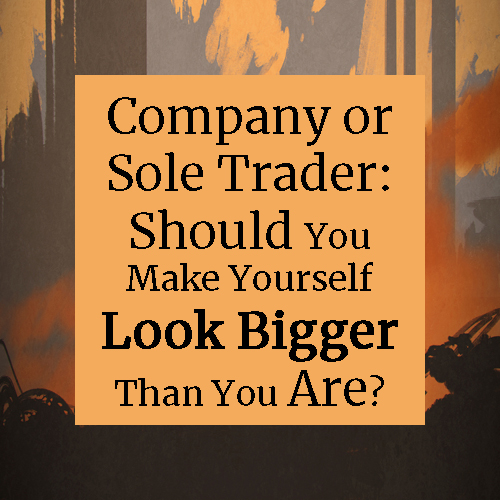Do I Really Need to Update My Website? 6 Reasons Why You Do
You've got a website already, thank you very much. It probably cost a fair bit too. Why would you need to overhaul and modernise it?
Whether potential customers find your website in search results or check it out after getting a recommendation, it's vital it gives the right impression. If your website looks old-fashioned, is wordy or confusing, doesn't work on mobile or no longer reflects your business model, you risk putting people off.
Read on for 6 reasons why, if it's more than a five or six years old, your website may well need an overhaul.
1. It makes your business look behind the times
You don't have to be a web developer to be able to spot the difference between an old and a new website. Have a go:
Apple's homepage, circa 1997
Apple's homepage, circa 2016
OK, Apple's 1997 homepage is clearly made for 4k dial-up, but you get my point.
Today's websites feature huge images that stretch and shrink across any screen, large or small. If your website was built more than six or seven years ago, it was probably built for a smaller screen resolution. It will be looking narrower and wordier by the day.
Nothing says you know what you're doing like a modern, responsive (which means functional on any device) website with a clean, simple look.
2. It doesn't get your message across fast enough
Your homepage has just 50 milliseconds to make a good impression, which is just enough time for someone to absorb the main image, read a short message and assess the amount of other 'stuff' on the page.
Look again at Apple's 2016 homepage. They put the iconic Macbook — a strong visual representation of the futuristic beauty of their products — centre stage. With just three words and a full stop: "Light. Years ahead", Apple conveys two messages about the Macbook and one message about the understated wit and intelligence of Apple itself. Short, sharp perfection.
You don't have to display your products on your homepage if physical products aren't what make you special. Many sites use an image that evokes the wonderful life their customers lead after doing business with the company; happy, beautiful, satisfied people or vast, peaceful landscapes.
3. It describes your services, not your benefits
Not long ago, websites were a bandwidth-starved novelty and therefore allowed to flout the normal rules of marketing and advertising. Nowadays they're just another way to let people know what a difference you could make to their lives.
And that's where your website might be falling down. Does it describe what you do, or does it express your benefits? If it's the former, your website won't be making the connection that is so vital on the web. Tell people the goal of what you do (for example, to save people time, bring beauty to their lives or make them happier) and you'll make your services relevant to their specific needs.
4. It doesn't work on mobile
Right now, in 2016, approximately half of all web traffic happens on mobile, and this number is only set to rise.
If you haven't looked for a while, check out how your website looks on your smartphone. Not good? Say goodbye to half your visitors.
Website management and design systems such as Wordpress and Squarespace automatically resize websites to look good on mobiles and tablets. Responsiveness should be part and parcel of a new site, not an expensive extra.
5. No one can find it
I'll add a disclaimer here that modern SEO is about so much more than the words and code you use to build your website. It's about the volume and relevance of content on your website and how often you update it. And even then, you have to drive traffic to it through channels like social media, email and links from more popular websites to really see the benefits.
Having said that, if you don't have the basics in place, Google won't be able to work out who you are or what you provide well enough to know how to deliver your website to people searching for it. Whatever you do, you'll find it hard to boost your site up the search results.
Wordpress (with the right plugins) and Squarespace have a lot of effective search engine optimisation functionality built in.
6. Your business and/or audience has changed
Few small businesses maintain the same target audience and core offerings over the years. You experiment, see what kind of offerings your customers prefer, and develop expertise in new areas. You may find certain services are more cost effective, and certain types of customer are easier and therefore cheaper to work with.
Your website may still be talking to your original target audience. Or worse, it may never have been optimised for one. If it describes services you no longer offer, your website is misrepresenting who you are. Time for a rethink.
So why a new website worth the cost?
Done right, a simple brochure website is actually a low-cost and highly effective way to market your business.
How much was your last website? Now divide that by the number of years it has been live. Compare the cost of your website to the rest of your marketing spend, such as brochures, networking meetings or advertising. A website is online all the time. It doesn't get recycled or deleted. It's there to receive enquiries and make sales while you sleep.
If your website is looking moth-eaten and mouldy, an overhaul will not only improve your credibility, it should also be good for business. Check out my portfolio for ideas.












